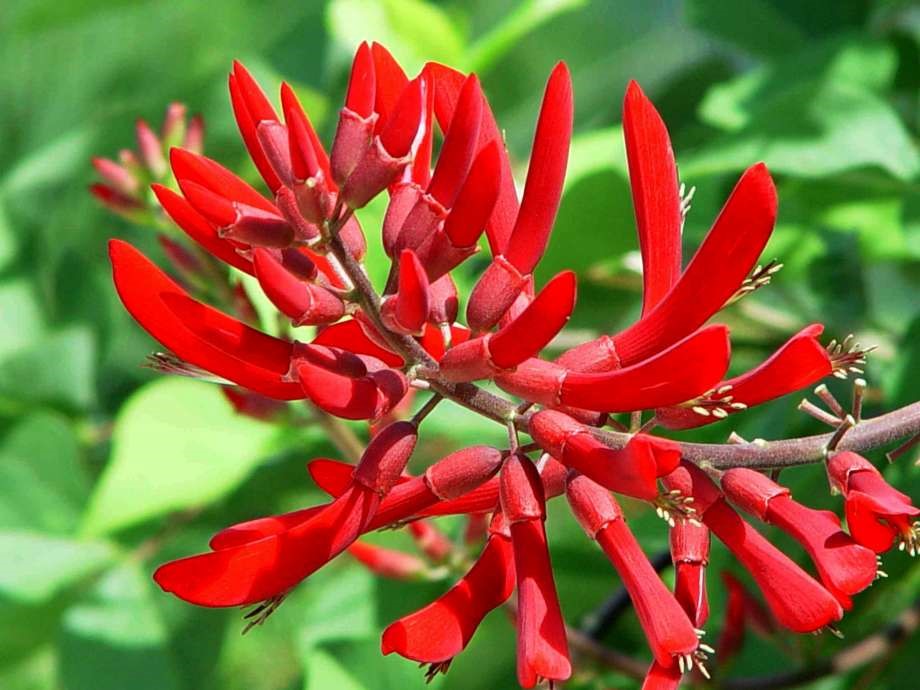The native Coral Bean (Erythrina herbacea) is ready to branch out along your coastal seascape, brightening the mood with evergreen and scarlet hues. This blossoming shrub blooms bright red during spring and early summer, popping out tubular flowers and pods full to the brim with beans! What a wonderful piece of natural beauty to raise in your own backyard.
The Coral Bean’s foliage owns a distinctive look of bright green trifoliate leaves, meaning three leaflets in each bunch. However, watch your fingers with this armored plant, as little prickles line the underside of each leaflet, along with thorns running down the stems. This is a way to fend off pesky birds trying to take a grab at all the luscious, fruitful seedpods that look irresistible to them.
Though, the zippy hummingbird can’t be easily deterred, as it’s known for finding the Coral Bean highly attractive. The tube-like flowers grow in groups of 2 foot long racemes, reaching a deep shade of ruby at their peak. The seed pods, which stay somewhat hidden while growing, split in the months of fall to release its mass of bright red beans.
To keep into consideration when harvesting such a plant, the Coral Bean is high salt and drought tolerant, perfect for our island atmosphere, and they grow 5-10 feet high and 8-12 feet wide at a moderate rate. They suit well as borders against a fence line or in masses but also fit as a specimen piece for an accent among other mild greenery. Partial shade is ideal. Alongside its regular position as a landscape plant, the Coral Bean has also been known to have other uses. Florida’s Native Americans were known to use its seeds to poison rodents and paralyze fish.
What a versatile plant with an intriguing background and attractive qualities to bring to your island garden! Get to planting!
This column is a joint effort by all at In The Garden, Sanibel’s local garden center located at 3889 Sanibel Captiva Rd, Sanibel Island, Florida.
